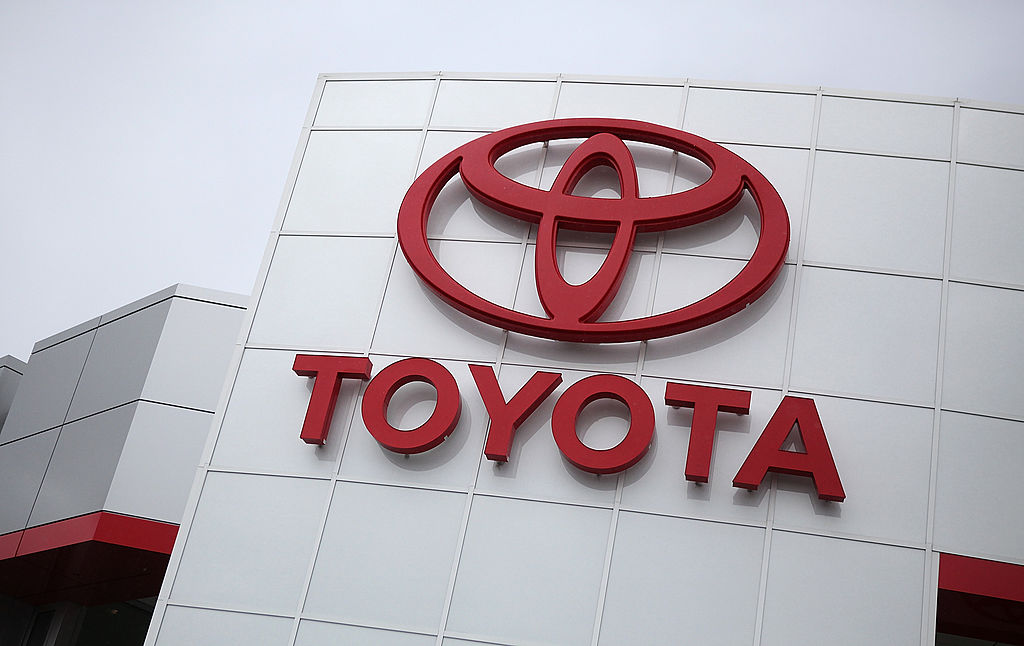Like IRAs, HSAs Can be Valuable Retirement Savings Vehicles
If you like traditional and Roth IRAs, then you might love the long-term growth potential of health savings accounts. They provide very similar benefits.


At face value, being subject to a high-deductible insurance plan may seem frustrating, but having one also gives you access to an HSA, which is a compelling benefit.
Typically, health savings accounts (HSAs) are used as savings accounts for medical expenses, providing tax-deductible contributions and tax-free withdrawals. There is, however, an interesting fringe benefit: Some providers allow you to invest your HSA in mutual funds and ETFs, allowing the balance to grow tax-free. If your company provides an HSA that does not offer these investment options, you are free to utilize any HSA plan, as long as you meet HSA eligibility requirements:
- You must be covered under a high-deductible health plan.
- You can’t be enrolled in Medicare.
- You can’t be claimed as a dependent on some else’s tax return.
HSAs have properties like traditional and Roth IRAs
HSAs have the potential to provide the benefits of both a traditional IRA and a Roth IRA. Because contributions to an HSA are made on a pretax basis — like a traditional IRA — they decrease taxable income by the amount contributed. In addition — like a Roth IRA — you could potentially have tax-free growth and tax-free distributions equal to qualified medical expenses. Keep in mind that while HSA dollars cannot be utilized for insurance premiums or over-the-counter medication, they do cover most other out-of-pocket medical expenses, including dental work and eyeglasses.
From just $107.88 $24.99 for Kiplinger Personal Finance
Be a smarter, better informed investor.

Sign up for Kiplinger’s Free Newsletters
Profit and prosper with the best of expert advice on investing, taxes, retirement, personal finance and more - straight to your e-mail.
Profit and prosper with the best of expert advice - straight to your e-mail.
Withdrawals from HSAs are flexible, too. There is no requirement to take distributions once you incur medical expenses. You may make these qualifying withdrawals after setting up the account at any time, whether that's next week or 30 years from now.
For example, say that at the beginning of 2017 you open an HSA for your family and contribute the maximum of $6,750. During 2017, you have $1,000 in out-of-pocket medical expenses. Instead of withdrawing the $1,000 from your HSA, you can opt to leave the $1,000 in the account to grow and compound.
As long as you keep your medical receipts, physically or digitally, you can withdraw qualified expenses at any time, tax-free. Your family would have saved the tax on the $6,750 of deductible contributions used to fund the HSA, and $1,000 is eligible for tax-free withdrawal, today or decades from now. Future qualified medical expenses add to the amount that you can withdraw tax-free at any time.
What if the account grows to a value that exceeds future medical expenses? Once a person turns 65, they can tap into their HSA the same way they could a traditional IRA: They could make penalty-free withdrawals to pay for anything, not just medical expenses. After age 65, you would pay income tax on distributions that aren’t used for qualified medical expenses, similar to a traditional IRA, but there would be no additional penalties or fees.
Deductible and contribution limits
HSAs are available to taxpayers with high-deductible health plans (HDHP). The minimum deductible must be at least $1,300 for an individual or $2,600 for a family to be considered an HDHP. In order to qualify as an HDHP, a health insurance plan must not offer any benefit besides preventive care before meeting the annual deductible. This means that the deductible must apply to prescriptions, visits with specialists and emergency room care, or it is not considered an HDHP. Additionally, the total yearly out-of-pocket expenses (including deductibles, copayments and coinsurance) can’t exceed $6,550 for an individual or $13,100 for a family.
In 2017, the maximum annual HSA contribution for a family is $6,750 and $3,400 for an individual. There is also a catch-up contribution of $1,000 for each family member over the age of 55. Unlike flexible spending accounts (FSAs), there is no limit on when funds in an HSA must be used.
There are some important caveats to consider, however. While surviving spouses may inherit the HSA as if it were their own, the entire account will become taxable income to any non-spouse who inherits it. Unclaimed reimbursed expenses will also be lost. Additionally, Alabama, California and New Jersey do not recognize HSAs, which means that contributions are not deductible and earnings are taxable for state tax purposes in those states.
Does a High-Deductible Health Plan make sense for you?
It is important to carefully analyze whether it makes sense for your family to make the switch to a high-deductible health plan instead of a traditional plan, which typically has a lower deductible but higher premiums. If you have few annual medical expenses or very high medical expenses, an HDHP could make a lot of sense. Here’s why:
- If you rarely need medical care, then you can save on premiums by getting a high-deductible plan and pumping the savings into your HSA. A few years down the road, you’d have a nice, tax-advantaged nest egg built up for future medical expenses.
- If you routinely have high medical expenses that exceed the deductible of an HDHP, you may end up with total out-of-pocket expenses similar to those with traditional health plans, when you take into account the price difference in premiums. However, with a high-deductible plan, you’d gain an important bonus: access to an HSA. Every plan is different, so if your health spending tends to be very high, be sure to calculate your total health expenditures, accounting for both premiums and likely out-of-pocket costs, before making this important decision.
- If you typically have expenses that hover near the deductible of a high-deductible health plan, you may be better off utilizing a more traditional health insurance plan, as your total costs with the HDHP may be higher. In this scenario, it is also important to project your total expenses for both the traditional option and HDHP option, based on your anticipated medical spending.
The bottom line is that HSAs significantly increase the appeal of high-deductible health plans. By thinking of your HSA as an additional retirement account, you can reduce your tax burden now, benefit from tax-free growth in the future and make tax-free withdrawals at any time, up to the amount of past medical expenses.
Profit and prosper with the best of Kiplinger's advice on investing, taxes, retirement, personal finance and much more. Delivered daily. Enter your email in the box and click Sign Me Up.

Kevin Peacock is the managing member of Astra Capital Management, a fee-only investment advisory firm based in New York City. Astra Capital Management utilizes an evidenced-based approach to investment management and financial planning customized for each client's unique wealth objectives. Kevin is a CFP® professional and holds the CAIA® designation. His educational background includes a master's degree in Financial Engineering and an MBA with a finance concentration.
-
 More Than 1 Million Toyota, Lexus and Subaru Vehicles Recalled for Camera Issue. Is Your Vehicle Affected?
More Than 1 Million Toyota, Lexus and Subaru Vehicles Recalled for Camera Issue. Is Your Vehicle Affected?A software glitch in the Panoramic View Monitor system causes blank or frozen rear-camera images, triggering a massive recall of 2022-26 models.
-
 My Four Pieces of Advice for Women Anxious About Handling Money
My Four Pieces of Advice for Women Anxious About Handling MoneyTalking about money can help you take control of your finances.
-
 A Financial Planner's Guide to a Stress-Free Adventure Abroad
A Financial Planner's Guide to a Stress-Free Adventure AbroadStart by looking at flight/accommodation costs, have a flexible schedule, seek out credit card rewards, prep for health issues and plan to cook your own food.
-
 I'm a Financial Planner: This Is How Smart Women Can Plan for Financial Freedom Despite Life's Curveballs
I'm a Financial Planner: This Is How Smart Women Can Plan for Financial Freedom Despite Life's CurveballsProactive planning and professional guidance can help to build your confidence and give you clarity when you're navigating major life transitions.
-
 Parents and Caregivers: Don't Miss Your Roth Conversion Window
Parents and Caregivers: Don't Miss Your Roth Conversion WindowCaring for a child or parent can mean a drop in income and a lower tax bracket. Why not take advantage by moving money into a Roth account? Here's how it works.
-
 Testing the Retirement Waters in Florida? A Partial Plunge May Negate Tax Breaks
Testing the Retirement Waters in Florida? A Partial Plunge May Negate Tax BreaksMost folks know Florida is a tax-friendly state, but they might not know that part-time residents may not qualify, as our cautionary tale shows.
-
 Catch-Up Contributions for Higher Earners in 457(b) Plans: What You Need to Know
Catch-Up Contributions for Higher Earners in 457(b) Plans: What You Need to KnowGovernment 457(b) plans are about to get more complex as new Roth catch-up requirements come into force. Here's how to prepare for the changes.
-
 I'm a Financial Planner: This Is Why Commitment, Not Perfection, Drives Financial Success
I'm a Financial Planner: This Is Why Commitment, Not Perfection, Drives Financial SuccessMeeting your goals is more likely if you stick to your strategy despite market volatility and scary headlines. Consistency makes a difference.
-
 I'm a Financial Professional: This Is Why Now Is the Time for Investors to Look Abroad
I'm a Financial Professional: This Is Why Now Is the Time for Investors to Look AbroadExtreme U.S. market concentration has made international equities not just a diversification play, but a timely opportunity.
-
 Four Ways to Make the Most of Your Benefits During Open Enrollment
Four Ways to Make the Most of Your Benefits During Open EnrollmentOpen enrollment is a chance to make sure you're getting every ounce of value from your workplace benefits and on track to reach your long-term financial goals.